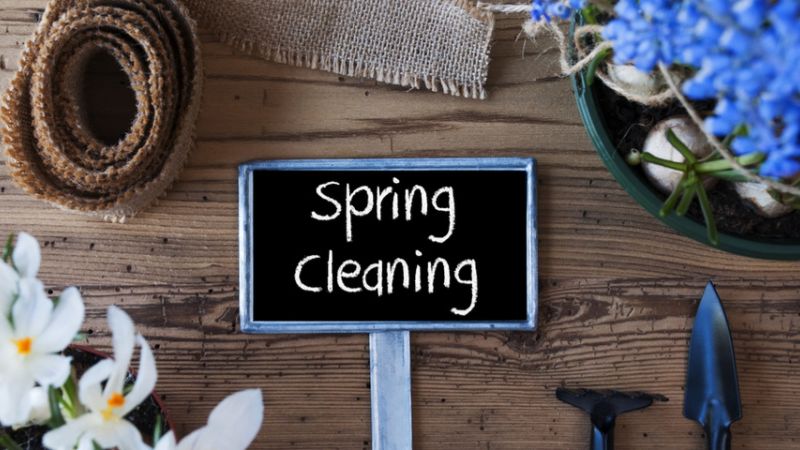With the first day of spring just around the corner, it’s officially the time of year to do some much-needed spring cleaning. It’s not uncommon for dust and dirt to build up after spending the chilly winter months indoors, with windows and doors closed tight. Spring cleaning is not only a necessary item on your to-do list, but house cleaning for seniors is also an opportunity to take preventative measures that can keep you safe in and around the home.
Although we never expect to experience an accident in our own home, it’s actually where six out of ten falls occur every year. This fact alone should make spring cleaning and senior safety your top priorities this season in order to prevent falls from occurring at home.
Spring Cleaning For Senior Safety
Between her book and her Netflix series, Marie Kondo has been educating Americans about how to reduce the clutter in their lives and become more organized. Born and raised in Japan, Kondo brings an Eastern approach to handling Westernized materialism by encouraging people to rid themselves of items that no longer spark joy. This makes for a great starting point when it comes to spring cleaning.
In addition to eliminating the need to hold onto things that are no longer serving you, house cleaning for seniors also needs to factor health hazards into the plan. Here are some tips to keep home safety for seniors in mind as you are spring cleaning:
Clear Out Clutter
Do you have area rugs, electrical cords, newspapers, magazines, books, or maybe even boxes and plastic bags lying around throughout your home? These items pose a serious fire hazard in addition to threatening senior safety by serving as potential tripping dangers. To lower your fall risk, go through each room and determine what can be donated, discarded or stored away carefully–especially if the item is flammable.
Once you’ve cleared out the clutter, think about how you can rearrange the furniture so you have clear pathways to walk through your home. This will make navigating your home even easier and safer, especially if you use a cane or walker.
Add Safety Supports
Spring’s rainy season can lead to slippery walkways both inside and outside of your home, which makes maintaining your balance much more difficult. To prevent slips in your home, add non-slip mats at each entrance, and always be sure that your shoes are completely dry before continuing inside your home. You can also make a habit of taking your shoes off when you come in from outside, which will prevent you from tracking dirt and water into the house. If you don’t like walking through the house in bare feet or socks, you can get a pair of slippers that are only for inside the house. You’ll be comfy and you won’t have to think about cleaning up any additional mess!
When it comes to senior safety, preventing falls at home is important but you also need to take precautions when walking outside on rainy days. Wear shoes with nonskid soles, and keep your eyes on the ground for anything that could cause you to fall, like uneven walkways, fallen leaves, and other debris.
Check The Stairs
Due to mobility limitations, stairs can become increasingly difficult to maneuver as you age, and uneven carpeting or loose steps can become a major threat to senior safety in the home. In addition to checking your stairs for uneven carpeting and loose floorboards, you should also add non-slip treads on every step and sturdy handrails on each side of the staircase for added support.
Remember to inspect the stairs outside of your home, as well. They are constantly exposed to the elements, so outdoor stairs may be even more unstable and pose more of a risk than the stairs inside your home.
Improve Lighting
If you suffer from any age-related vision problems, avoiding safety hazards in your home becomes much harder. Luckily, something as simple as opening up the curtains throughout the day—especially now that we can enjoy more sunlight—will improve your ability to spot those hazards that threaten your safety in the home.
Other preventative steps, like adding more lamps, using brighter bulbs and placing nightlights in hallways, will also lower your fall risk as you move throughout your home, day or night.
Home Safety For Seniors Starts With A Clean Home
Organizing your home is a key step in lowering your fall risk and ensuring your ability to continue living independently. If you’re unsure where to begin, these tips will help you tackle spring cleaning.
Even after taking the time to clean your home in order to make senior safety more of a priority,
falls and other accidents can still happen. Although none of us know when an emergency will strike, a Medical Guardian medical alert device ensures your safety day or night, both inside and outside of the house. Should you ever experience a fall, medical emergency, accident, or even a house fire or power outage, immediate help is always just the push of a button away with Medical Guardian.

